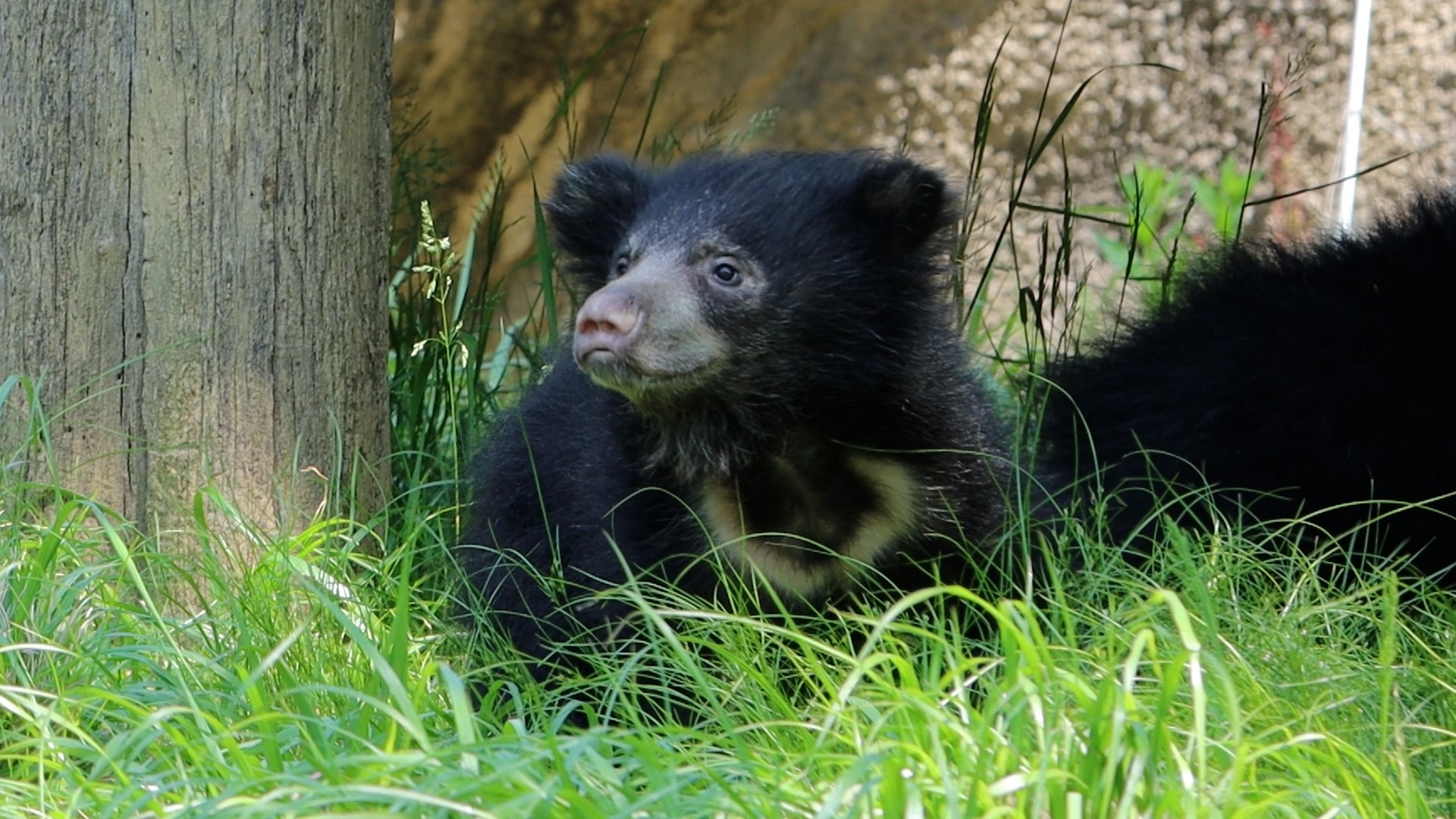PHILADELPHIA — The Philadelphia Zoo has officially introduced its two four-month-old sloth bear cubs to the world as excited guests, zoo members, staff, and volunteers witnessed the historic moment.
The cubs, two males born on January 2 to 10-year-old mom Kayla and 10-year-old dad Bhalu, have until now been behind the scenes with Kayla inside their den.
To accompany their long-awaited debut, the Philadelphia Zoo is now asking for the public’s help in choosing names for the boys.
The pairs of names, chosen by Zoo staff, all have a Philadelphia connection to celebrate the first time a pair of sloth bear cubs has been born at the Zoo in more than 30 years.
- Kelce & Harper – for Philly sports legends Jason Kelce of the Eagles and Bryce Harper of the Phillies
- Hall & Oates– for Philly’s iconic pop rock duo with hits like “Out of Touch” and “You Make My Dreams Come True”
Fans are encouraged to vote for their favorite choice at philadelphiazoo.org/sloth-bear-cam/.
Voting opened today and will remain open through Sunday.
The winner will be announced on the Zoo’s social media channels on Monday, May 29.
Fans can also watch the cubs explore their exhibit anytime, anywhere with a new live-streaming camera presented by Xfinity. The best time to view the cubs is in the morning.
“The Philadelphia Zoo is proud to participate in the Association of Zoos and Aquarium’s Species Survival Plan (SSP) for the threatened sloth bear,” said Vice President of Animal Well-Being Rachel Metz. “Their birth is incredibly important to the protection of this species and we are excited for guests to come to the Zoo and see for themselves what amazing animals they are.”
“We are so proud of our amazing team of keepers and veterinarians who have been supporting mom Kayla and the cubs since their birth in January,” said Curator of Carnivores and Ungulates Maggie Morse. “These rambunctious toddlers are sure to steal the hearts of many of our guests. We can’t wait to celebrate all the developmental milestones to come with our guests, members, staff, volunteers and entire Zoo community.”
Sloth bears are small at birth, weighing only about a pound and are essentially helpless, relying completely on their mother for care. A mother will typically care for her young for several months in a sheltered den before the cubs begin to emerge.
Cubs can begin walking on their own at about a month old. At around 3-4 months, mom and cubs will emerge from the den, and unlike any other bear species, cubs will ride on mom's back by clinging to her long fur!
Cubs will stay on mom's back for about six months and nurse from mom for about a year, and remain with her for 2-3 years. Male sloth bear cubs do not play a role in rearing offspring, so Bhalu will not be involved with the cubs.
Philadelphia Zoo works with the Species Survival Plan (SSP) breeding program of the Association of Zoos and Aquariums (AZA). The goal of this program is to manage populations of threatened, endangered and other species across AZA institutions to maintain long-term genetic and demographic viability to protect species from extinction.
The Philadelphia Zoo is home to four sloth bears: 10-year-old male Bhalu, 10-year-old female Kayla and two male cubs.
Sloth bears are found in the lowland forests of India, Nepal and Sri Lanka and are listed as vulnerable by the International Union for Conservation of Nature (IUCN) with populations decreasing dramatically in recent decades due to habitat loss, human-wildlife conflict and poaching.
Sloth bears have several distinctive features and behaviors. They have flexible snouts with protruding upper and lower lips and powerful lungs that allow them to dislodge and eat termites and ants that are 8-10 feet underground. They can voluntarily close their nostrils to make sure no insects enter their nose.
Aside from insects, sloth bears eat fruits, flowers and honey. They also have long, dark shaggy fur with a distinct, cream-colored "U" or "Y" shaped marking on their chests. Adult males can weigh between 175-310 lbs. Females are smaller and weigh 120-210 lbs.

